A Guardian report from 11 countries tracks how US waste makes its way across the world and overwhelms the poorest nations
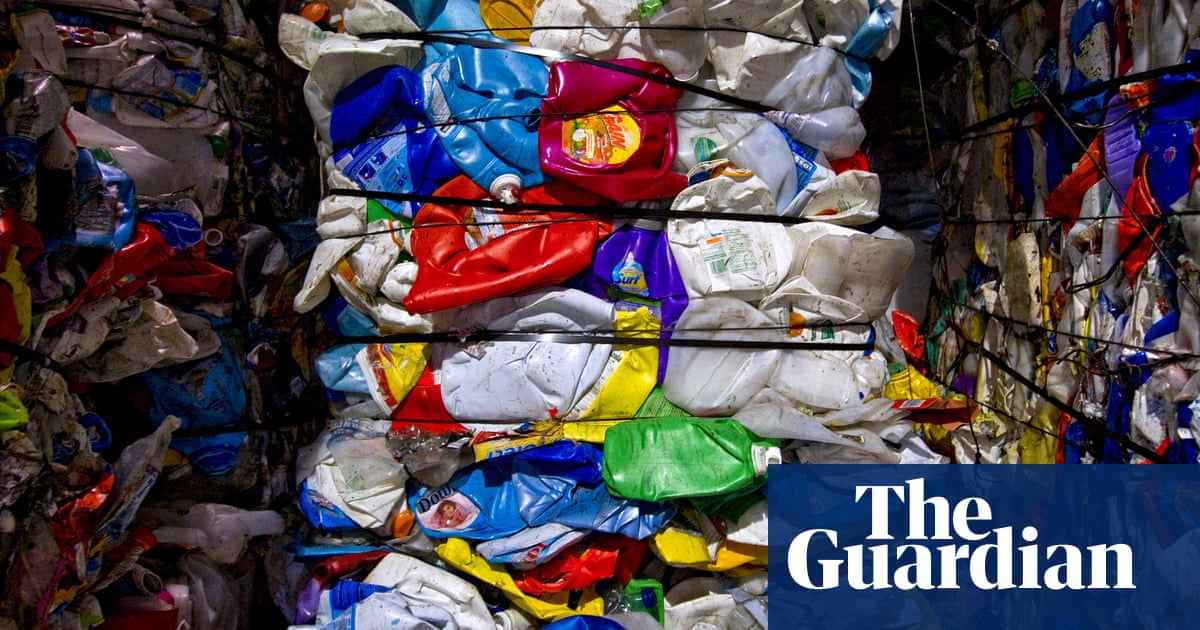
What happens to your plastic after you drop it in a recycling bin?
According to promotional materials from Americas plastics industry, it is whisked off to a factory where it is seamlessly transformed into something new.
This is not the experience of Nguyn Th Hng Thm, a 60-year-old Vietnamese mother of seven, living amid piles of grimy American plastic on the outskirts of Hanoi. Outside her home, the sun beats down on a Cheetos bag; aisle markers from a Walmart store; and a plastic bag from ShopRite, a chain of supermarkets in New Jersey, bearing a message urging people to recycle it.
Tham is paid the equivalent of $6.50 a day to strip off the non-recyclable elements and sort what remains: translucent plastic in one pile, opaque in another.
A Guardian investigation has found that hundreds of thousands of tons of US plastic are being shipped every year to poorly regulated developing countries around the globe for the dirty, labor-intensive process of recycling. The consequences for public health and the environment are grim.
A team of Guardian reporters in 11 countries has found:
-
Last year, the equivalent of 68,000 shipping containers of American plastic recycling were exported from the US to developing countries that mismanage more than 70% of their own plastic waste.
-
The newest hotspots for handling US plastic recycling are some of the worlds poorest countries, includingBangladesh, Laos, Ethiopia and Senegal, offering cheap labor and limited environmental regulation.
-
In some places, like Turkey, a surge in foreign waste shipments is disrupting efforts to handle locally generated plastics.
-
With these nations overwhelmed, thousands of tons of waste plastic are stranded at home in the US, as we reveal in our story later this week.
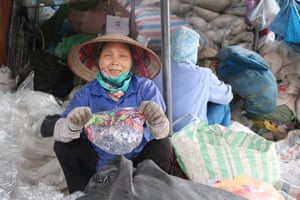
These failures in the recycling system are adding to a growing sense of crisis around plastic, a wonder material that has enabled everything from toothbrushes to space helmets but is now found in enormous quantities in the oceans and has even been detected in the human digestive system.
Reflecting grave concerns around plastic waste, last month, 187 countries signed a treaty giving nations the power to block the import of contaminated or hard-to-recycle plastic trash. A few countries did not sign. One was the US.
A new Guardian series, United States of Plastic, will scrutinize the plastic crisis engulfing America and the world, publishing several more stories this week and continuing for the rest of 2019.
People dont know whats happening to their trash, said Andrew Spicer, who teaches corporate social responsibility at the University of South Carolina and sits on his states recycling advisory board. They think theyre saving the world. But the international recycling business sees it as a way of making money. There have been no global regulations just a long, dirty market that allows some companies to take advantage of a world without rules.
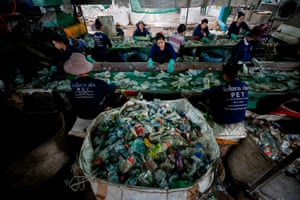
Where Americas recycling lands
Plastic only came into mass consumer use in the 1950s, but in the Pacific Garbage Patch it is already thought to be more common than plankton. Officials around the globe have banned particularly egregious plastic pollutants, such as straws and flimsy bags, yet America alone generates 34.5m tons of plastic waste each year, enough to fill Houstons Astrodome stadium 1,000 times.
Of the 9% of Americas plastic that the Environmental Protection Agency estimated was recycled in 2015, China and Hong Kong handled more than half: about 1.6m tons of our plastic recycling every year. They developed a vast industry of harvesting and reusing the most valuable plastics to make products that could be sold back to the western world.
But much of what America sent was contaminated with food or dirt, or it was non-recyclable and simply had to be landfilled in China. Amid growing environmental and health fears, China shut its doors to all but the cleanest plastics in late 2017.
Since the China ban, Americas plastic waste has become a global hot potato, ping-ponging from country to country. The Guardians analysis of shipping records and US Census Bureau export data has found that America is still shipping more than 1m tons a year of its plastic waste overseas, much of it to places that are already virtually drowning in it.
A red flag to researchers is that many of these countries ranked very poorly on metrics of how well they handle their own plastic waste. A study led by the University of Georgia researcher Jenna Jambeckfound that Malaysia, the biggest recipient of US plastic recycling since the China ban, mismanaged 55% of its own plastic waste, meaning it was dumped or inadequately disposed of at sites such as open landfills. Indonesia and Vietnam improperly managed 81% and 86%, respectively.
We are trying so desperately to get rid of this stuff that we are looking for new frontiers, said Jan Dell, an independent engineer, whose organization The Last Beach Cleanup works with investors and environmental groups to reduce plastic pollution. The path of least resistance is to put it on a ship and send it somewhere else and the ships are going further and further to find some place to put it, she said.
Take Vietnam. Minh Khai, a village on a river delta near Hanoi, is the center of a waste management cottage industry. Rubbish from across the world, inscribed in languages from Arabic to French, lines almost every street in this community of about 1,000 households. Workers in makeshift workshops churn out recycled pellets amid toxic fumes and foul stench from the truckloads of scrap that are transported there every day. Even Minh Khais welcome arch, adorned with bright red flags, is flanked by plastic wasteon both sides.
In 2018, the US sent 83,000 tons of plastic recycling to Vietnam. On the ground, Americas footprint is clear: a bag of York Peppermint Patties from Hershey, with US labeling, and an empty bag from a chemical coatings manufacturer in Ohio.
Were really scared of the plastic fumes, and we dont dare to drink the water from underground here, said Nguyn Th Hng Thm, the plastic sorter, wearing thick gloves, a face mask and a traditional Vietnamese conical hat to protect herself from the sun.We dont have money so we dont have any choice but to work here.
While the exact health effects of workers exposure to plastic recycling operations have not been well studied, the toxic fumes resulting from the burning of plastics or plastic processing can cause respiratory illness. Regular exposure can subject workers and nearby residents to hundreds of toxic substances, including hydrochloric acid, sulfur dioxide, dioxins and heavy metals, the effects of which can include developmental disorders, endocrine disruption, and cancer.
Once the plastic is sorted by workers like Tham, others feed the scrap into grinders before putting it through densifiers that melt and condense the scrap so it can be molded into pellets.
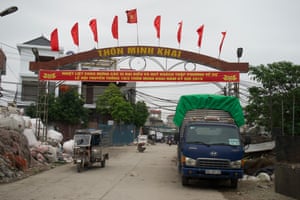
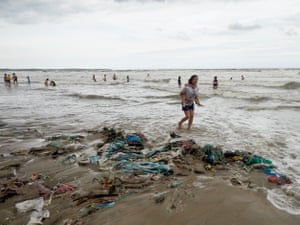
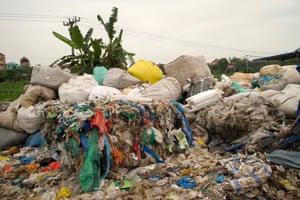
The Vietnamese prime minister, Nguyn Xun Phc, ordered a tightening on scrap standards in July 2018, and legal monthly imports were cut to one-tenth of what they had been. As of April, more than 23,400 shipping containers of scrap remain held up in customs. But business continues to boom in Minh Khai. Tham said that scrap is still arriving from Haiphong, northern Vietnams largest port, and other parts of the country every day, and records show a significant rebound in imports.
As countries like Vietnam, Malaysia and Thailand banned imports, records show the plastic waste fanning out to a host of new countries. Shipments began making their way to Cambodia, Laos, Ghana, Ethiopia, Kenya and Senegal, which had previously handled virtually no US plastic.
The Guardian found that each month throughout the second half of 2018, container ships ferriedabout 260 tons of US plastic scrap into one of the most dystopian, plastic-covered places of all: the Cambodian seaside town of Sihanoukville, where, in some areas, almost every inch of the ocean is covered with floating plastic and the beach is nothing but a glinting carpet of polymers.
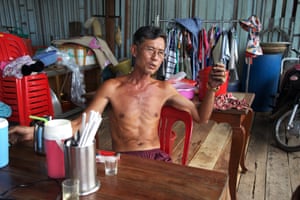
I cannot accept plastic being imported into our country, said a resident, Heng Ngy, 58. Ngy and his wife live in a wooden house on stilts that seems to hover on a sea of plastic. A pungent stench wafts up to the open-aired rooms.
Cambodias waste problem is believed to stem from its own use of plastic and a lack of any system for dealing with it. No one interviewed in Sihanoukville had any idea that plastic recycling was being exported from the United States, and what happened to the plastic after it arrived is unclear.
Experts estimate that 20% to 70% of plastic entering recycling facilities around the globe is discarded because it is unusable so any plastic being recycled at Sihanoukville would inevitably result in more waste there.
Alex Gonzalez-Davidson, the co-founder of the Cambodian environmental organization Mother Nature, said his organization had not been aware of the issue. But if it works, they will bring more and more, he said. For now, shipments of plastic appear to have tailed off.
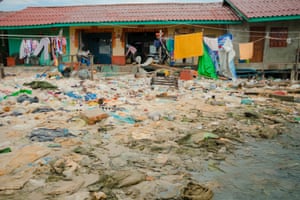
How plastic waste fuels a global business
How does your plastic get from your curbside to a village in south-east Asia? Through a trading network that crosses oceans and traverses continents. Its a network that is complex, at times nefarious, and in which few consumers understand their role. Now, that network is at a breaking point.
Plastics first stop on its months-long journey is a recycling facility where it is sorted into bales based on its type soda bottles, milk jugs and clamshell-style containers, for instance, are all made of subtly different kinds and readied for sale.
Waste plastic is a commodity, and recycling brokers search across the US and abroad for buyers who will want to melt the plastic down, turn it into pellets, and make those pellets into something new.
In the past, it made economic sense to ship the plastic to Asia, because shipping companies that transport Chinas manufactured goods to the US end up with thousands of empty shipping containers to carry back. In the absence of American goods to fill them, the companies have been willing to ship out Americas recycling at rock-bottom rates.

Steve Wong, a Hong Kong-based businessman, is one of the middlemen who connects your recycling with international buyers. At one time, I was one of the biggest exporters in the world, he said, worth millions. Now, Wong said, his company, the Hong-Kong based Fukutomi Recycling, was deep in debt.
Wongs problem is hardly a lack of supply. Each month the equivalent of thousands of shipping containers worth of recyclable plastics, which used to be exported, are piling up all over the United States. Nor is his worry a shortage of demand for plastic. It is desperately needed by factories in China for manufacturing into myriad new products from toys and picture frames to garden gazebos.
What is nearly killing his business is the fact that many countries have soured on the recycling industry, after unscrupulous operators set up shop, operating as cheaply as possible, with no regard for the environment or local residents.
In our industry, if you do it properly, you save the environment, Wong said. If you do it improperly, you destroy the environment.
As far as profits go, the numbers just barely favor recycling.
Wong said he might spend $150 to buy a ton of plastic scrap from a US recycler. Once it is shipped abroad, sold to a processor, turned into pellets and then again shipped to a manufacturer, the seller might ask as much as $800 per ton.
Yet the cost of similar virgin plastic, which is often higher quality, is just $900 to $1,000 a ton.
Wong believes the answer in the future will be to process the material closer to the United States. That is why he has planned trips to meet with government officials in the Dominican Republic and Haiti, and why, on a recent Wednesday, Wong crisscrossed back and forth through heavy traffic in the Mexican city of Monterrey, located about 150 miles south of Laredo, Texas.
Wong, a trim 61-year-old dressed head-to-toe in khaki like a safari hunter, was working to set up a new plastics recycling factory for an investor who hopes to one day process US plastic.
At one reseller a corrugated-metal warehouse piled floor-to-ceiling with plastic that included shimmery sheaths of wrapping from US retail stores Wong wanted to test the quality of the supply. He filled a baggie with ground-up flakes of black plastic from picking crates, then took a cigarette lighter and lit one of the flakes on fire. He carefully sniffed the smoke to get a sense of what variety of plastic it was.
At Wongs next stop, an existing Monterrey recycling processor, you could get a sense of the work the new factory might do.

A rudimentary plastic processing machine stretched 40ft across the bare dirt of the warehouse floor. The processor takes rejected car parts and grinds them up into confetti-sized flakes. Workers feed these flakes into a flume that channels them past a heater to melt them. The melted plastic is pressed into long, white strings, which are stretched across the room and allowed to harden. At that point, they are chopped into pellets a little bigger than rice grains.
Wong said he would like to build more modern factories with up-to-date systems for eliminating toxic releases to the air and water. But he said he was sure that many of his less scrupulous competitors would keep exporting on the cheap. He suggested that even in countries that had banned plastic imports, the material continued to be smuggled in.
Recyclers have set up factories in all these countries, but they dont have enough supply. So, even though it is smuggling, even though it is not legal, they still have to do what it takes to get the plastic.
With US plastic landing in countries that have never seen it in such quantities, local residents are crying foul.
In the Philippines, about 120 shipping containers a month are arriving in Manila and an industrial zone in the former US military base at Subic Bay. Records indicate they were filled with plastic scrap shipped from such places as Los Angeles, Georgia and the Port of New York-Newark.
From the Manila port, shipping records and Philippines customs documents show, some of the US plastic was transported to Valenzuela City. The area, on the outskirts of the Philippine capital, is known as Plastic City and residents are increasingly concerned about the number of processing factories sprouting in their midst.
You smell that? said a shopkeeper, Helen Lota, 47, as she stood in front of her neighborhood conveniencestore at noon one day last month. Thats nothing. Its worse towards evening. It gets suffocating,
There are times its really hard to breathe. Many of us here are getting sick, said Lota. I had my daughters cough checked in the hospital. But the X-ray is clear. The coughing must be caused by the smell.
Noticing Lota complaining about the plastic problem, passersby stopped to chime in. My mothers cough wont go away, probably because of the smell, said Renante Bito, 38.
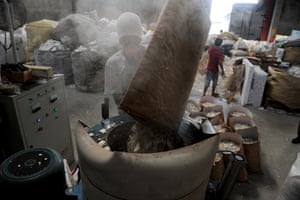
Yet recycling is also one of the areas biggest income sources. Officials and residents interviewed by the Guardian said they had assumed the plastic being processed in their town was the Philippines own waste. None realized that some of it was being shipped from the US. Representatives for the factories receiving US waste declined to be interviewed.
In Turkey, US plastic imports may be putting an entire profession at risk. Since China closed its doors, the amount of plastic recycling Turkey takes in from abroad has soared, from 159,000 to 439,000 tons in two years.
Each month, about 10 ships pull into the ports of Istanbul and Adana, carrying about 2,000 tons of cheap US scrap plastic that is no longer wanted by China. Most of it comes from the ports of Georgia, Charleston, Baltimore and New York. Some of it is described in shipping records as Walmart film scrap, the clear cling wrap used to secure huge pallets of products sold by Walmart. (Walmart declined to comment on the issue.) These cargo ships join dozens of others from the UK and other European countries.
Their arrival is closely watched by Turkeys scrap pickers, who number in the hundreds of thousands and travel the streets collecting scraps from houses and businesses to resell to factories for manufacturing into products such as plastic bags.


Recent Comments